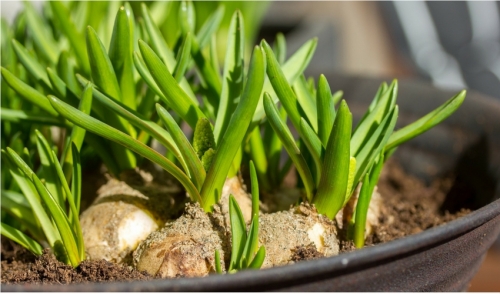
Bulbs are a Bright Idea
No other types of plants will give the gardener more beauty, or a wider range of variety, color and flowering times than flowering bulbs. They produce flowers of incredible colors from one end of the growing season to the other. Nothing else will reward you with so much pleasure for so little effort...at least in your garden.
Plan ahead
Color and time of bloom are two of the most important elements to consider when planning your bulb and garden planting. It can be very helpful to make a sketch of your garden before planting. Consider which bulbs to plant and where based upon height, sunlight, color and blooming time. Remember, most of the bulbs you plant in fall are hardy and can remain undisturbed for years while most of the bulbs you plant in spring are tender and must be dug up and stored before cold weather sets in.
Soil prep
Good soil preparation is the first step to successful bulb gardening. Make sure the soil is loose and porous. Well-drained soil is a must or else bulbs will rot. The soil should be turned over and organic matter, peat moss or a bulb nutrient (such as Bulb Booster) worked through to encourage root development.
How deep?
The depth of planting for bulbs depends on their size. A good rule of thumb is that the depth should be three times the diameter of the bulb. Small bulbs should be covered with 1-2-in. of soil while large bulbs should be planted 6-8-in. deep (see individual listings for specifics). In the South, plant large bulbs 2-in. shallower than the normal recommendations.
How far apart?
The spacing of bulbs depends largely on the effect you are trying to achieve. The most effective planting technique is to plant most bulbs in clumps rather than in individual lines. Space bulbs according to color with the softer colors in the front and the more vibrant in the background. Group bulbs according to height and in sequential bloom pattern for a long-lasting show of color.
After planting...
Cover bulbs with soil, water well and mulch with shredded leaves. In the spring, when the first shoots appear, remove the mulch and sprinkle again with bulb food (Bulb Booster). This encourages the flowering and helps rebuild the bulb for the next year.
If the weather is dry, water the bulbs during their growing period. When the flowers begin to fade and before a seed pod forms, cut the flower head...but be careful to leave the foliage to die back naturally.
Storing bulbs
Spring flowering bulbs do not have to be dug and stored in most Hardiness Zones. To store summer flowering bulbs, dig the bulbs when the foliage has withered or turned brown by a light frost. Air dry in a well-ventilated area for a week. Then remove all soil from the bulbs. Bulbs must be dried before storing or they will rot. Dust the bulbs with a fungicide and store in dry peat moss or wood shavings in a brown paper bag, open crate, netted bag or even old pantyhose. Store at 50-55-degrees in a dry location until time to replant.

